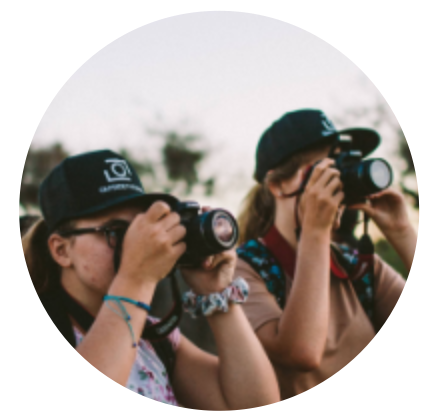Composing Better Photos
Whether you have a point-and-shoot or a DSLR, you can easily apply a few simple rules to enhance your photos.
1. Rule of Thirds
The most well known rule of photography is the Rule of Thirds, where the photo is divided into a 3x3 grid. As shown below, the image's main lines and objects are centered on the lines and the points where they intersect.
Many modern cameras and phones offer an easy setting to display the grid over the screen.

You don't have to use the rule of thirds, simply don't make the rookie mistake of centering your subject in every shot.
2. Lines
Attract and direct the viewer's eye by using lines. Organic or straight lines can create a more powerful impact and create a sense of motion.
2. Patterns, Shapes, and Symmetry
Patterns, shapes, and symmetry are everywhere. Utilize them in your photo to make a more powerful impact, or break the pattern to create a focal point and a sense of tension.
3. Lines
Attract and direct the viewer's eye by using lines. Organic lines, straight lines, or implied lines (e.g. the direction of a person's gaze) can create a more powerful impact and create a sense of motion. You can lead a viewer around the photograph or create a better sense of depth within the photo.

4. Background & Framing
Always allow the eye to distinguish between the subject and background. Leave negative space or select a clean, non-distracting background to allow the viewer to center on the subject.
You can also "frame" the subject with your setting's natural trees, arches, hallways, and other scenes that set the subject apart from the background.
5. Contrast
Contrast is a powerful element in photography that can bring out vivid colors or create an intense, powerful, and dramatic effect.
Final Thoughts
You now know a few common compositional tricks in photography that you can use in your photographs. Although these rules can apply to many of your photos, if they don't fit a particular scene or shot, ignore them!
Always keep in mind that it's OK to play around and break the rules!
If you've got any other tips to help photographers like you, please leave a comment below! For more tutorials like this, join our mailing list and become a part of our social community!










